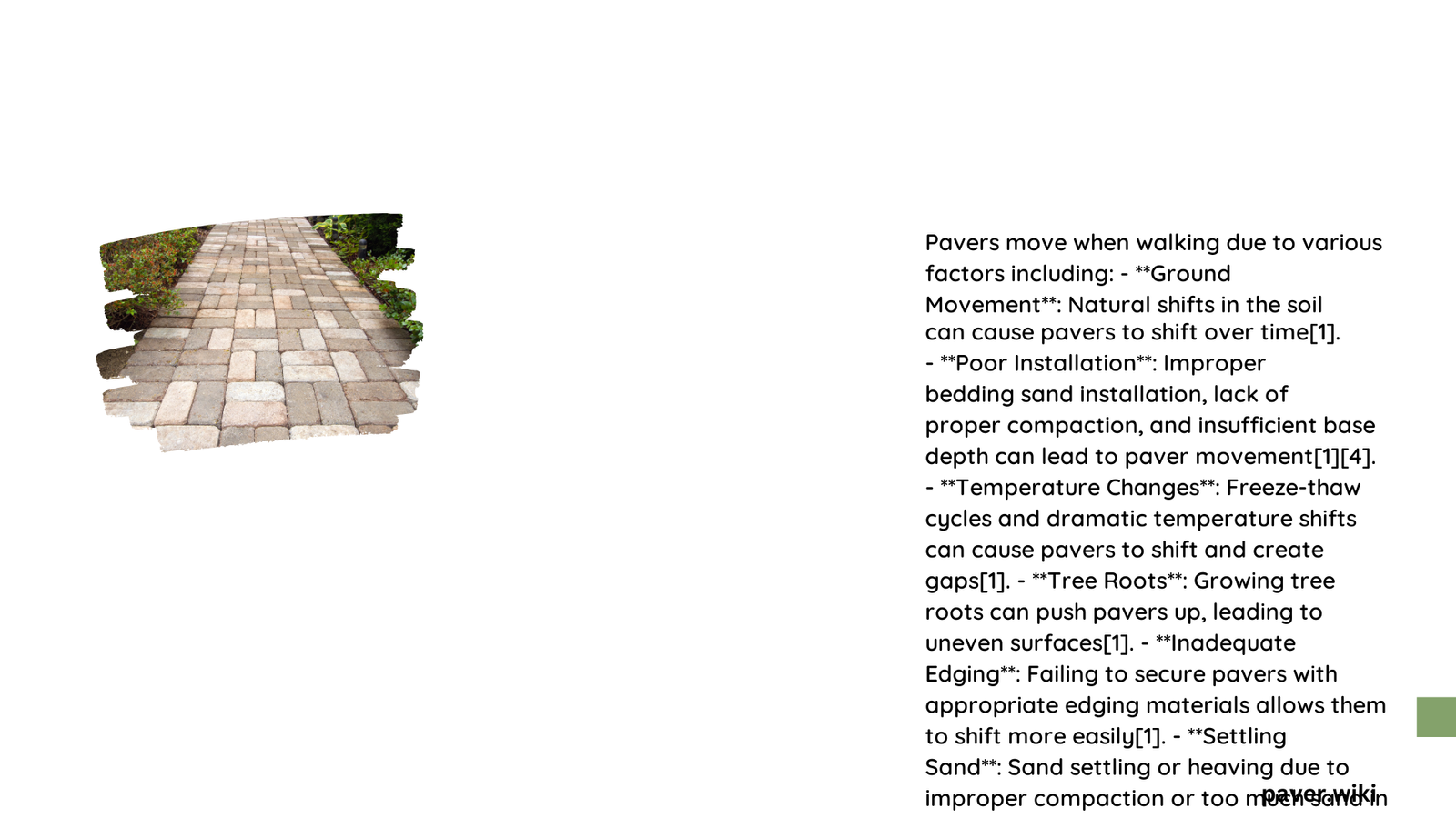Pavers moving underfoot can be a frustrating experience for homeowners and landscaping professionals. When walking across paved surfaces, unexpected movement indicates underlying structural issues with installation, base materials, or ground conditions. Understanding the root causes of paver instability helps prevent potential safety hazards and costly repairs, ensuring a stable and long-lasting outdoor surface.
Why Do Pavers Shift Beneath Feet?
What Causes Ground Movement Under Pavers?
Paver movement results from multiple interconnected factors that compromise the structural integrity of the installation. The primary contributors include:
- Soil Dynamics
- Uneven ground compression
- Moisture content variations
-
Seasonal temperature fluctuations
-
Installation Techniques
- Inadequate base preparation
- Insufficient compaction
- Poor drainage design
How Does Soil Compaction Impact Paver Stability?
| Compaction Factor | Impact on Pavers | Potential Consequences |
|---|---|---|
| Low Density | High Movement | Rapid Surface Deterioration |
| Medium Density | Moderate Movement | Gradual Performance Decline |
| High Density | Minimal Movement | Long-Term Structural Integrity |
Critical Base Material Requirements
Successful paver installation demands meticulous base material selection and preparation:
- Recommended Base Layers:
- 4-6 inches crushed stone
- 1-2 inches fine sand
- Geotextile fabric for additional stabilization
What Drainage Challenges Contribute to Paver Movement?
Improper drainage creates significant instability by:
– Eroding base material
– Creating soft, unstable ground
– Promoting soil settlement
– Increasing moisture-related ground expansion/contraction
How Can Homeowners Diagnose Paver Movement?
Warning Signs:
– Visible surface unevenness
– Audible shifting when walking
– Gaps between paver edges
– Water pooling around installation
– Recurring weed growth between pavers
Professional Strategies for Paver Stabilization
Experts recommend comprehensive approaches:
- Ground Preparation
- Thorough site excavation
- Precise grade leveling
-
Proper compaction techniques
-
Material Selection
- High-quality aggregate base
- Appropriate drainage materials
-
Polymeric joint sand
-
Installation Methods
- Mechanical plate compaction
- Systematic layer-by-layer construction
- Edge restraint implementation
Cost Considerations for Paver Repair
| Repair Complexity | Estimated Cost Range | Recommended Action |
|---|---|---|
| Minor Adjustment | $500 – $1,500 | Professional assessment |
| Moderate Repair | $1,500 – $3,500 | Partial reinstallation |
| Complete Replacement | $3,500 – $10,000 | Full system reconstruction |
Conclusion

Understanding why pavers move when walking involves recognizing complex interactions between ground conditions, installation techniques, and material properties. Proactive maintenance and professional consultation can significantly mitigate movement issues.
Key Takeaways
- Regular inspection prevents extensive damage
- Professional installation minimizes movement risks
- Quality materials are crucial for long-term stability
Reference:
– Hardscape Professionals Guide
– Soil Mechanics Journal
– Construction Engineering Resources
